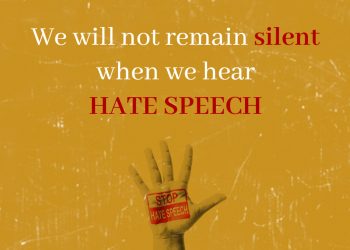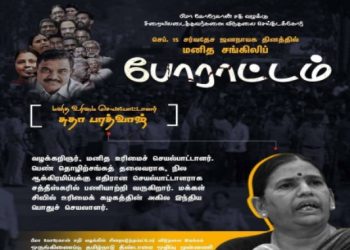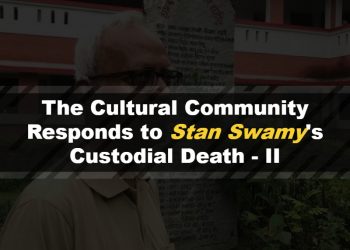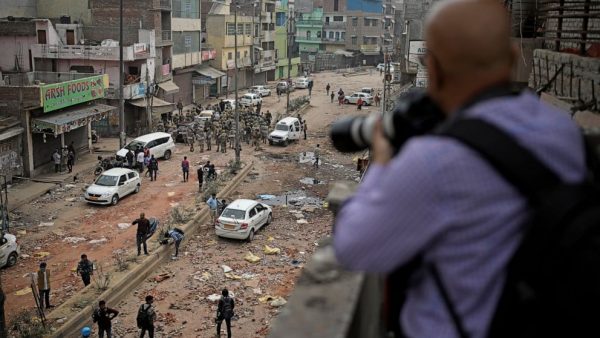
The Committee Against Assault on Journalists (CAAJ) has released a report titled “Republic In Peril” that showcases recent cases of assaults on journalists in Delhi during the period from December 2019 to February 2020. The report documents a total of 32 such cases spread across three phases.
Phase 1: December 15-20, 2019
The report documents seven cases of journalists being assaulted when the went to cover the violence at Jamia Milia Islamia University (JMIU). According to the report, during this period, “These assaulted journalists included mainstream news channels, agency, international media BBC and digital platforms. The assaulters included mob and police.”
One of the most infamous cases of assault during this period was that of Shaheen Abdulla, who was covering the story for Maktoob Media, an English digital news platform based in New Delhi. Video of him being chased by cops, being dragged and beaten brutally and then being shielded by two young women Ayesha Renna and Ladeeda Sakhaloon outside the JMIU campus had gone viral. In an interview to NDTV Abdullah had recounted his story as follows:
“When I saw them trapped (the female students of Jamia Millia Islamia), I rushed towards them. I knew them personally. I tried to help them to move to a safe place. When the cops came running, I showed them my press card and told them that I am a journalist. ‘Don’t beat me up; I am not here for any kind of violence. I am just trying to help them for medical attention’. But they started tapping me with their lathis on my legs. While I tried explaining them with the ID in my hand, they kept beating me. Then we went to a safe place, cops came in a group and they were like ‘now you come out’. They tried to induce me to follow their instruction. The girls protected me by shielding around. When girls started to come in-front, cops started to come inside. And somehow they (cops) got a hand on me and they pulled me outside.”
Another case was that of BBC journalist Bushra Sheikh who was physically assaulted by a policeman. She said, “I came here for BBC’s coverage. The police took away my phone and broke it. A male cop pulled my hair. They hit me with a baton and when I asked them for my phone, they hurled abuses at me.”
Nationwide, there were a total of 16 cases where reporters and camera persons were covering protests against the Citizenship Amendment Act (CAA).
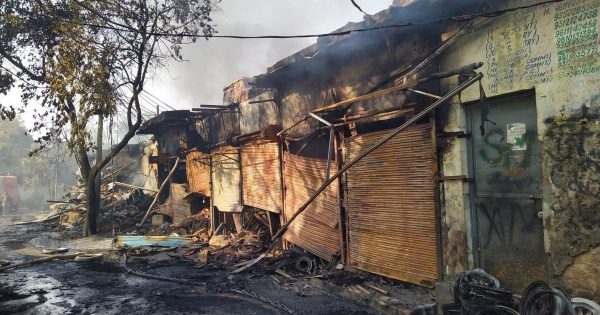
Phase 2: January 2020
The report says, “On January 5, 2020 journalists were targeted outside Jawaharlal Nehru University campus, which was attacked on the same evening by a veiled mob. The number of cases reported in various media outlets and first-hand cases reported on twitter count to half a dozen. Those assaulted were also specifically targeted, stopped from coverage and directed/intimated by the mob.” It adds, “This phase reached its peak on the last day of January, 2020 when journalists were hounded, beaten up and detained at ITO and Rajghat. The numbers included more than ten, many of them senior scribes who were there to report Satyagraha March and pay homage to Mahatma Gandhi on his death anniversary. More than half a dozen journalists were detained until dark in a local stadium. Delhi Police was solely responsible for this assault.”
The report quoted first hand accounts by many journalists. For example, Rohan Venkataramakrishnan of Scroll.in was recording a video of the sloganeering right-wing activists at the JNU main gate on January 5, 2020, when he was surrounded, called a “Naxalwadi”, shoved around and hit on the head. Karnika Kohli of Scroll.in reported that a group armed with bats and sticks was stationed near the main gate. She overheard one of the members of the group say: “Beat up NDTV guys if you see them.”
On January 31, 2020, many journalists were violently attacked at detained by the police at ITO. The Press Club of India in a condemnation statement said, “From the first reports we have, Rajesh Kumar, Shivesh Garg and a clutch of other journalists were forcibly taken away to an unknown destination- probably a distant detention centre or police station. We have no further information.” Other journalists also attacked by police included photographer Sanjay K. Jha of The Telegraph, and S. K. Pande, a senior journalist and leader of the Delhi Union of Journalists.

Phase 3: February 2020
The report reveals several horror stories of intimidation, violence and humiliation inflicted upon journalists during this period. The report says, “The third phase is a dark chapter of horror in the history of Freedom of Press in Delhi that reminded many of the Emergency days. Around 18 cases were reported where journalists were not only stopped from coverage, but identified as Hindu/Muslims, ashamed publicly and beaten up by the rioting mob. There camera, equipment broken and vehicles burnt up by the mob.”
On February 24 Akash Napa of JK 24 was shot at while reporting from Maujpur. He was admitted to the GTB Hospital. “The bullet is stuck inside and the doctors have said operating is risky,” his brother told Newslaundry. “He has been shifted to a ward and they are doing some tests.”
On February 25, 2020, NDTV’s Saurabh Shukla and Arvind Gunasekar were brutally assaulted while covering the vandalism at a Muslim shrine at Meet Nagar. Shukla describes events saying, “I was just behind Arvind, 20-30 metres behind him. When we stopped recording, one protester, or one rioter for that matter, he spotted Arvind. They grabbed Arvind and started beating him up. I saw Arvind was lying on the floor. He was bleeding. I came for his rescue,” he said. “They were about to hit Arvind with a stick on his head. I intervened, and so that stick landed on my shoulder.”
Saurabh said the mob punched him and dragged him away from Arvind because they thought Arvind alone was filming. “Later, I did not show them my NDTV ID. I had a Foreign Correspondents’ Club card. I had shown them that and told them that I was not reporting for any Indian television; I was from some foreign agency,” he said. “They kept telling us, get Arvind to delete everything from his phone. And later, they did stop beating us up because they saw my name and said, ‘You’re from our own community. You should not be doing this. You should not be filming this.’”
But things were much worse for freelance journalist Sushil Manav who was allegedly forced to strip and even recite the Hanuman Chalisa to prove he wasn’t Muslim. Times of India’s Anindya Chattopadhyay also faced a similar ordeal on January 24, 2020. He wrote about his ordeal in the newspaper. Stepping out of the Maujpur metro station just past noon, he wrote, he was “taken by surprise when a Hindu Sena member suddenly approached me offering to put tilak on my forehead saying it would make my work ‘easier’. ‘You are also a Hindu, bhaiya. What is the harm?’ the man said.”
When Chattopadhyay tried to photograph a building that had been set on fire, a few men wielding bamboo sticks and rods surrounded him. They tried to snatch his camera, but his colleague, Sakshi Chand, stepped in, and the men went away. But later, he wrote, a group of men followed him. A youth accosted him and said, “Bhai, tu zyada uchhal raha hai. Tu Hindu hai ya Musalman?” Chattopdhyay said they threatened to take off his pants so they could confirm if he was Hindu or Muslim. Only after pleading with folded hands that he was let go.
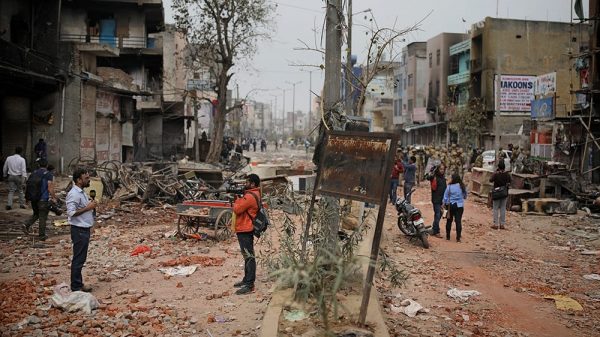
Conclusion
The report concludes by drawing a grave image of the republic indicting the legislature and the executive in equal parts for their role in the entire matter. It also speaks about the polarization of media and its disastrous consequences. It says, “In recent times, we have witnessed a complete partisan character of media owing to its ownership and business model. The coining of new terms such as “Godi” (lapdog) media and “Rashtrawadi” media suggest a complete polarisation among media outlets. This has created a perception polarisation among media consumers who consume the information and news from “our” media and reject “their” media. The polarisation of news landscape has resulted in identification of individual journalists from their banners/brands. This identification either glorifies an individual journalist or vilifies it.”
It adds, “Here comes the polarised character of assault too. The assaults on journalists have increasingly become some sort of “identity punishing”, depending which group he/she is representing. This we have shown in first two phases of assault in December and January. Whenever this sort of assault takes place, the reaction inside the media fraternity is also divided on the same lines. Never has been a single incident of assault in last few years when the whole fraternity spoke in a single voice.”
The report then showcases the consequences of polarization and lack of unity saying, “The natural result of this complicity and partisanship was what we witnessed in the last week of February when no one was in the condition to prove his/her innocence and credentials in front of a rioting mob, asking for identity proof. A scribe from a partisan media house was targeted for the same cause whereas another scribe from a non-partisan outlet was targeted due to the polarised perception. The reality and perception both stand polarised heavily. Journalists on ground are paying price for it.”
The entire report may be read here:

